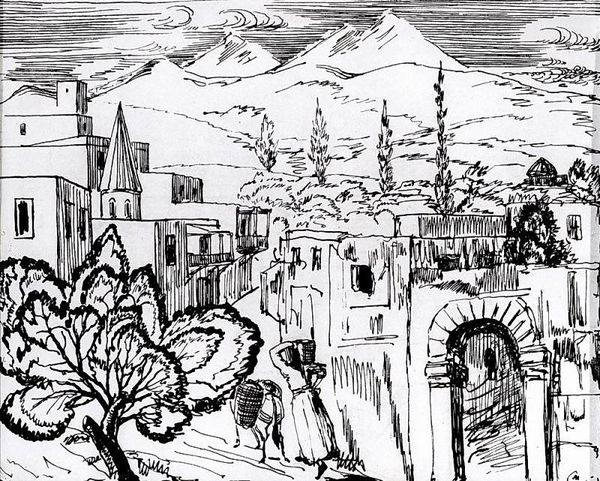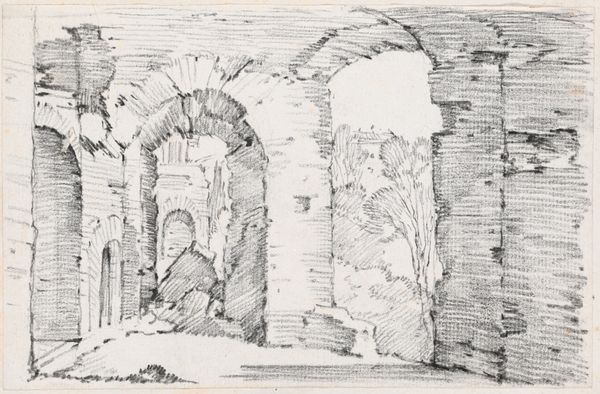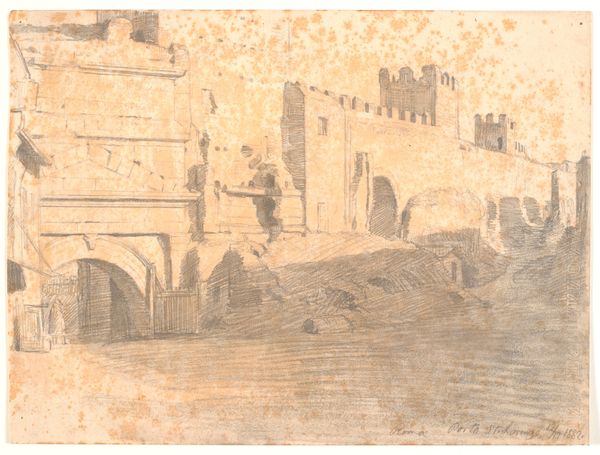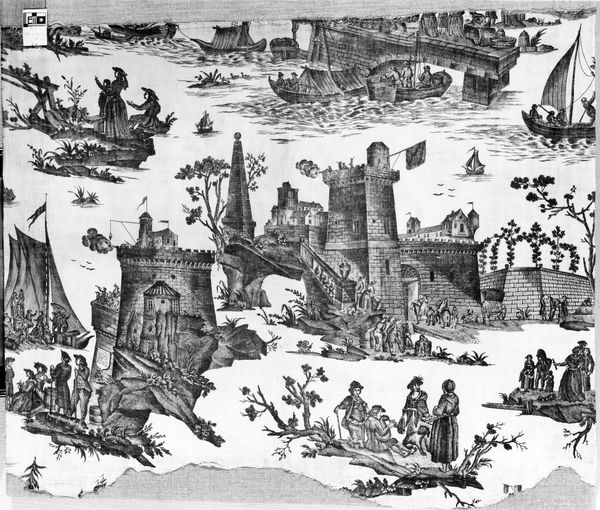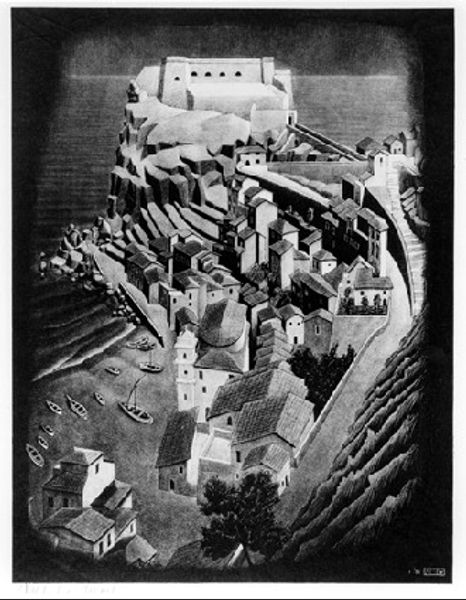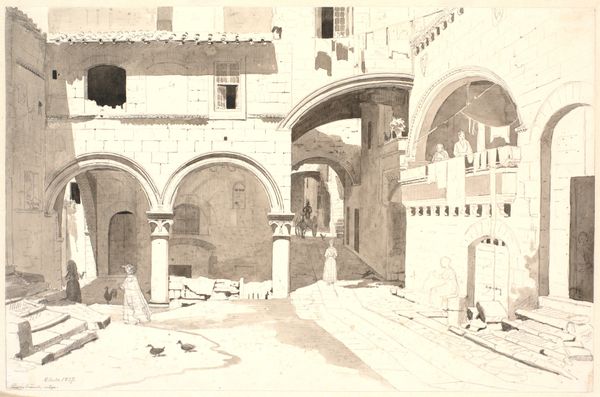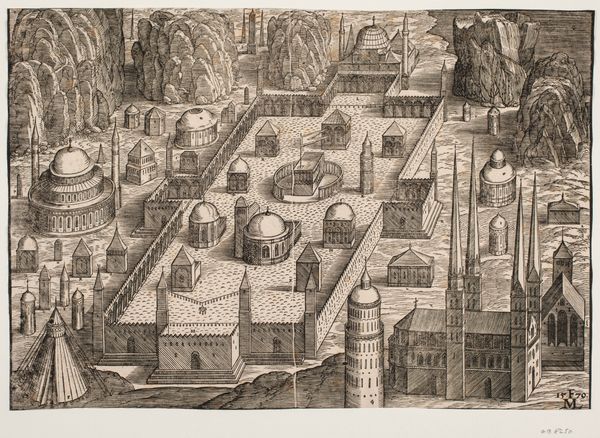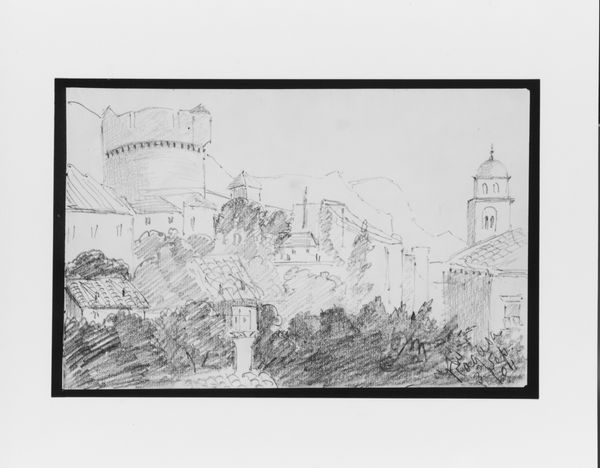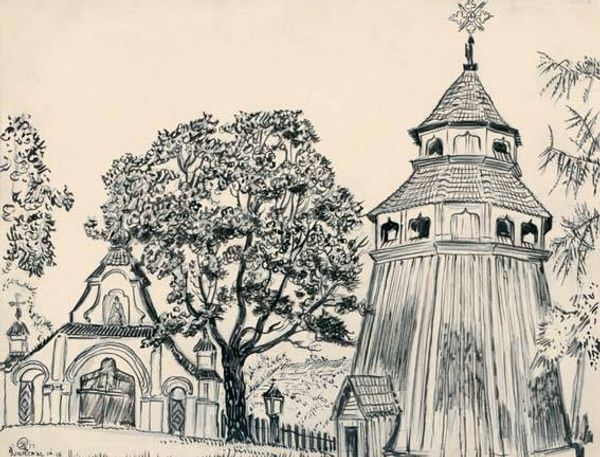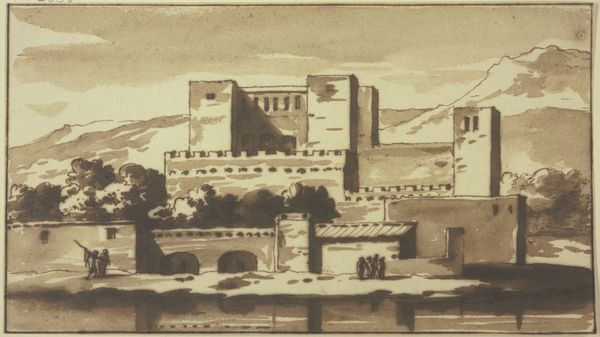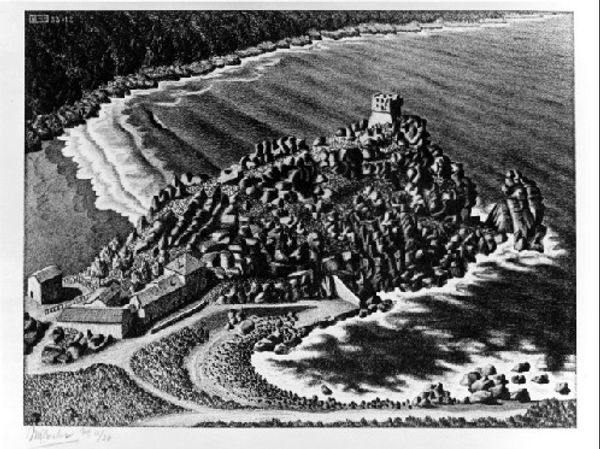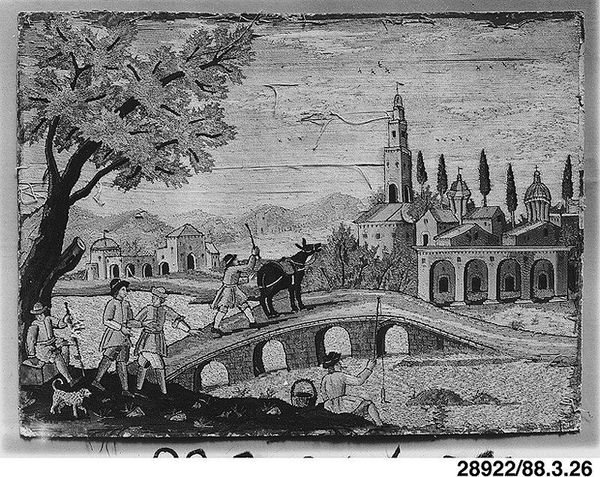
drawing, paper, ink, architecture
#
drawing
#
asian-art
#
paper
#
ink
#
geometric
#
cityscape
#
miniature
#
architecture
Copyright: Martiros Sarian,Fair Use
Editor: We’re looking at Martiros Sarian’s "Illustration to a poem by Firdausi 'Shahnameh,'" created in 1934 using ink on paper. The cityscape has an almost dreamlike quality. It's stripped down to the essentials—shapes and lines create depth and texture. What stands out to you in terms of its structure and composition? Curator: Notice the geometric underpinnings—the cubes, cylinders, and domes. These forms provide a sense of stability, even though the drawing itself possesses a fluid, almost improvisational quality. The use of line is particularly interesting. Are they merely representational or is there more at work? Editor: I think it's more than representation. The varying line weights and the density of the hatching create texture. It feels tactile even though it's a flat image. The way he renders those hills is quite dynamic, and there's a subtle interplay between the dark, active ground and light space above, Curator: Precisely. The positive space occupied by the buildings is clearly delineated, while the negative space is just as significant. Notice how the lines defining the city bleed slightly, creating a softness, juxtaposed with those precise geometric volumes of architecture. Editor: So, you’re saying that the apparent looseness contributes to its structured character. Is the apparent spontaneity a visual tool or a historical reference to illustrative style? Curator: Both I think. There is artful intent in both those formal considerations. The composition doesn't feel arbitrarily assembled. Consider that dome shape, offset in the overall pattern of crenelated rooftops, is there something structural which gives depth to what could have been another flat, uniform elevation? Editor: It creates tension, drawing the eye across the image while the mountains hold and define the cityscape. I've never looked at line drawings in this much detail, usually dismissing them for more exciting paintings. But the form of this one, through the stark contrast and textures, makes me appreciate it differently. Curator: Indeed. Sometimes simplicity is the ultimate sophistication, unveiling complex relational elements of composition.
Comments
No comments
Be the first to comment and join the conversation on the ultimate creative platform.
